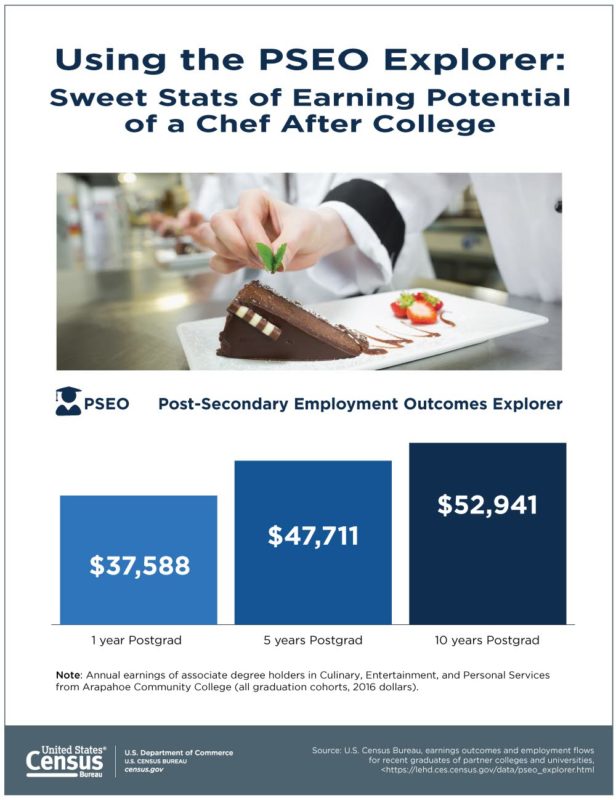WASHINGTON – How can a culinary degree help an aspiring chef spice up future earnings?
The expected annual salary for a chef one year after culinary school is about $37,588, according to the Census Bureau’s Post-Secondary Employment Outcomes (PSEO) Explorer tool. Salaries rise to $47,711 in five years and $52,941 10 years after culinary college.
With the holidays fast approaching and the popularity of reality television cooking shows, food is at the forefront of the country’s cultural landscape — and perhaps so is interest in prospective culinary careers.
The U.S. Census Bureau recently released an infographic that features data on annual earnings of associate degree holders in the culinary, entertainment and personal services industries, using graduates from the Arapahoe Community College of Colorado as an example.

Details from the infographic were derived from the interactive tool, which allows prospective students and parents to search statistics on earnings and employment outcomes of graduates of select post-secondary institutions in the United States.
PSEO is an experimental data product that highlights employment and earnings outcomes for college and university graduates.
By matching university transcript data with a national database of jobs, PSEO traces graduate movements from postsecondary institution, degree level and degree major to employment by industry and geographic labor markets.
According to the Bureau of Labor Statistics Occupational Outlook Handbook, employment in food preparation and service-related fields is expected to grow by 20% from 2020 to 2030, gaining about 2.3 million jobs over the next decade. Median annual pay for food preparation and serving-related occupations was $25,500 in May 2020.

Aspiring chefs can use the PSEO Explorer to find out which industry sector of employment Culinary, Entertainment and Personal Services graduates are choosing. They can glean information on geographical dispersion, too.
Nearly 53% of culinary graduates from Arapaho Community College entered other service industries; about 13% went into health care and social assistance, and 6% went to manufacturing.

As of October 2021, the PSEO dataset includes 534 institutions from 17 states — Alabama, Arizona, Colorado, Connecticut, Indiana, Iowa, Louisiana, Maine, Michigan, Missouri, New York, Ohio, Pennsylvania, Texas, Utah, Virginia and Wisconsin.
The PSEO Explorer allows users to explore data previously reported in an America Counts Story.









